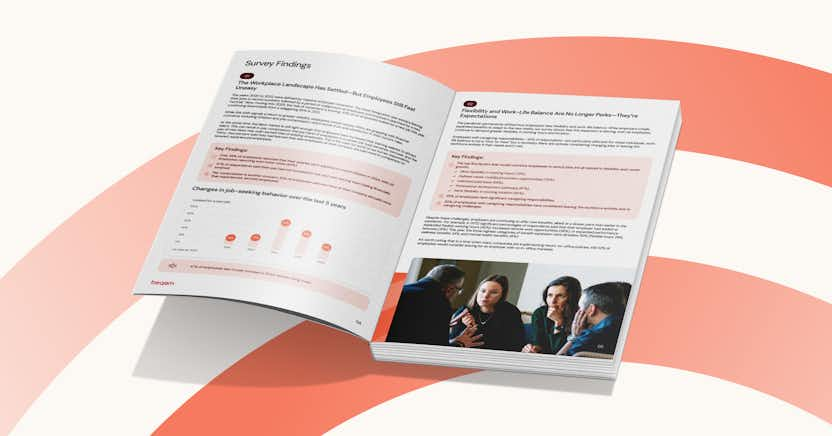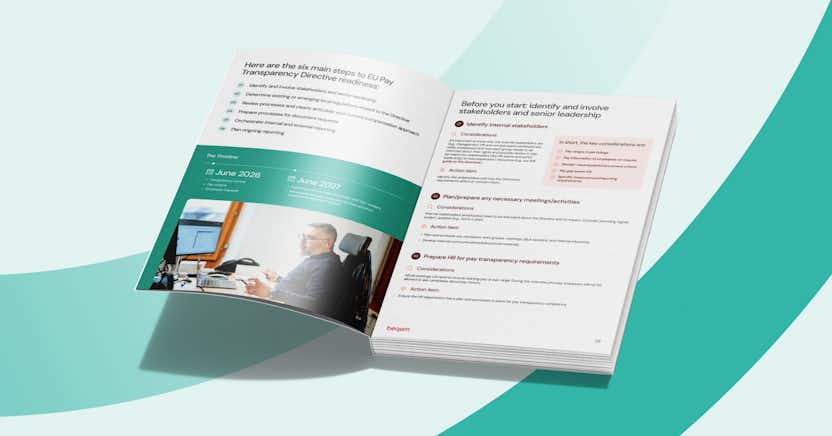8 Steps to Sustainable Pay Equity & Top Performance: Part 1, Analyze and Plan

Establishing pay equity within a company goes beyond merely setting a pay scale and generating reports. It requires intentionality, ongoing commitment, and a thoughtful review of your HR processes. It is an especially challenging process for large and global organizations.
Achieving pay equity is essential for maintaining a diverse and inclusive workplace, fostering employee satisfaction and loyalty, reducing risk, and ensuring legal compliance. In this series of two blogs, we will explore eight crucial steps to achieving sustainable pay equity within your organization, while also fostering top performance.
The importance of pay equity
Pay equity, also known as equal pay for equal work, is a crucial aspect of creating a fair and inclusive work environment. It refers to ensuring that all employees, regardless of their gender, race, ethnicity, or other characteristics, receive equitable compensation for performing similar work or jobs of comparable value. Pay equity is essential for various reasons, including promoting employee satisfaction, productivity, and retention while also safeguarding against discrimination and legal liabilities.
At its core, pay equity is a matter of basic fairness and social justice. It upholds the principle that individuals performing the same tasks or contributing similar value to an organization should be compensated equally, irrespective of their personal attributes. When employees feel that they are receiving fair compensation for their efforts, they are more likely to be motivated and engaged, leading to increased productivity and a positive work atmosphere.
Moreover, pay equity is critical for building a diverse and inclusive workplace. It helps bridge the wage gap between demographic groups, promoting diversity and representation at all levels within an organization. This inclusivity fosters a sense of belonging, empowers employees to perform at their best, and attracts top talent from diverse backgrounds, enhancing innovation and creativity.
Challenges in implementing pay equity
Despite the significance of pay equity, several challenges hinder its successful implementation within organizations. Some of the key challenges include:
Unconscious Bias: Biases, whether related to gender, race, or other factors, can influence compensation decisions. Unconscious bias may lead to the undervaluation of certain employees' contributions or capabilities, perpetuating pay disparities.
Historical Disparities: Lingering historical inequalities in compensation have contributed to persistent wage gaps among various demographic groups. Addressing these historical disparities requires deliberate and sustained efforts.
Lack of Transparent Compensation Practices: Some organizations lack transparency in their compensation practices, making it difficult for employees to understand how their pay is determined and potentially contributing to pay disparities.
Negotiation Practices: Negotiation during the hiring process can inadvertently lead to pay discrepancies, as certain individuals or groups may negotiate less effectively than others or feel less empowered to negotiate at all.
Complex Organizational Structures: Large organizations with intricate job hierarchies may struggle to maintain pay equity across various roles, departments, and geographies.
Data Limitations: Limited or inadequate compensation data can hinder accurate assessments of pay equity within an organization. Even if the data exists, specialized tools are required to properly analyze the data.
Legal and Compliance Issues: Failure to address pay equity concerns properly can expose organizations to legal challenges and reputational damage. While these risks can motivate organizations to prioritize pay equity, some companies may find it challenging to keep up with changing regulations, workforce demographics, and industry standards.
Despite these challenges, organizations that prioritize pay equity and commit to overcoming these hurdles can create a more equitable and inclusive workplace. By adopting intentional and data-driven approaches, businesses can build a strong foundation for sustainable pay equity that benefits both employees and the organization as a whole. Most importantly, dealing with pay equity is not a one-time process. It is imperative to establish sustainable mechanisms for pay equity over time.
8 steps to sustainable pay equity
Below are steps that we have found to be helpful in establishing a pay equity program that is effective and sustainable.
1. Evaluate Your Current Pay Equity Status
It’s important to make decisions based on facts, so an essential first step is to assess the status of pay equity within your organization. The right analytical tools can help you to measure and understand the so-called “explained” and “unexplained” pay gaps. The former are gaps that can be attributed to valid factors like role or seniority. The fact that these gaps can be explained does not necessarily mean they are not a problem—they may reflect fundamental inequities in processes for hiring or promotion (more on that later). Unexplained gaps are those that are associated only with demographic factors like gender, race, or age, or an intersection of such factors.
This analysis is not simplistic. It requires intelligent tools that can harness artificial intelligence technology such as machine learning and apply regression analysis to identify root causes of pay gaps. beqom, for example, provides dedicated pay equity capabilities necessary to perform this type of deep dive analysis.
A key part of the analysis is to understand the cost to remediate any discrepancies, and to develop budget scenarios that will allow you to make decisions about the feasibility and financial impact of closing pay gaps.
Just remember that pay equity is not a one-and-done process. Your pay equity report card needs to be monitored ongoingly.
2. Define Your Goals
Armed with the facts, you can now bring your stakeholders together to make some decisions. What kind of company do we want to be? How will pay equity affect our employer brand? What can we afford?
After evaluating your current pay equity status, set clear and measurable pay equity goals for your organization. Establish specific targets and timelines to track your progress effectively. These goals should align with your company's commitment to diversity, equity, and inclusion.
You should factor in local requirements. Where do we want to grow? Think about your deployment strategy. Where can you have the most impact? What would outcomes would you expect from those impacts?
3. Determine How to Measure Progress
Measuring progress is vital to understanding the effectiveness of your pay equity initiatives. The goals you set should be measurable. Develop metrics and key performance indicators (KPIs) to monitor and evaluate your progress regularly.
Consider what activities will drive outcomes and how you will measure progress. What are your success metrics? In other words, what are the intended outcomes, and what metrics will measure those outcomes?
Gather data, and make sure it looks right. This data-driven approach will help you identify areas that need further attention and assess the impact of your actions.
4. Identify influencing factors and metrics
Just as a balanced scorecard helps an organization track the underlying drivers that lead to financial success, pay equity has drivers that need to be managed to ensure the success of the program.
Various metrics can influence the pay gap, such as promotion rate or headcount for diverse leadership or technical roles. In fact, pay equity practices should start in the offer process, with a robust analysis of offers vs. incumbent cohorts with similar criteria.
It is important to consider and measure opportunity gaps in addition to pay gaps. Pay gaps may arise due to inadequate representation of diverse talent in leadership or technical roles associated with higher pay scales. To attain pay equity, it becomes imperative to enhance the representation of certain groups among those who are provided with such opportunities.
And there’s more
In our next blog, we will cover the remaining four steps:
- Infuse pay equity into HR decisions and processes
- Review your performance processes
- Set policies for trust and transparency
- Support managers with communication and tools
Achieving sustainable pay equity is an ongoing journey that requires intentionality and continuous commitment. By evaluating your current pay equity status, setting clear goals, measuring progress, and identifying influencing factors, you can lay the foundation for creating a more equitable, high-performance workplace.
Would you like to know how compensation and performance technology can support you in achieving pay equity and top performance? Contact beqom to set up a conversation.
Find out what employees think about pay equity and compensation in our 2023 survey report, Leveling the Paying Field: A Look at the Gender Pay Gap and Other Compensation Trends.
















